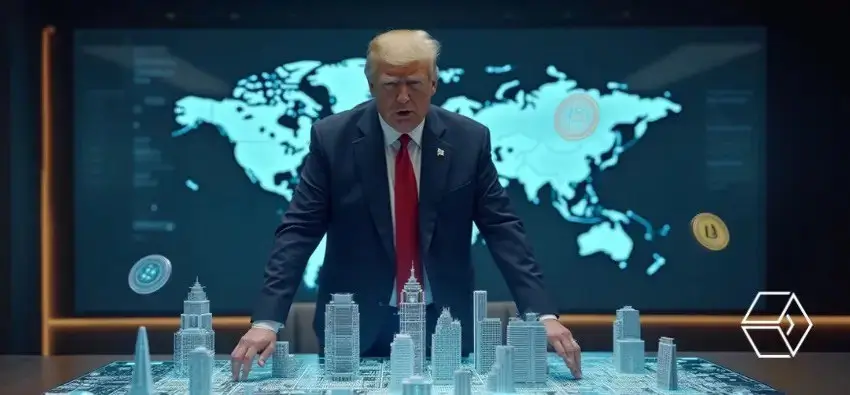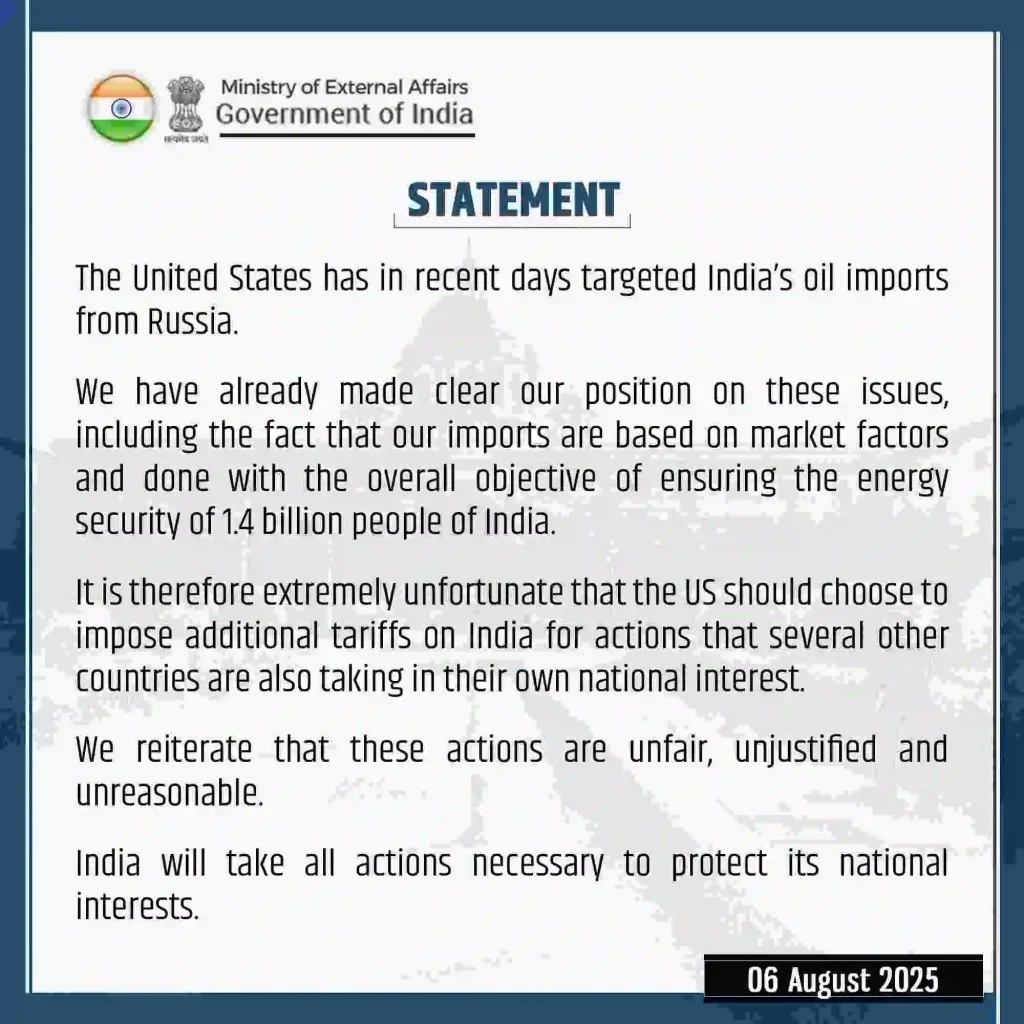
- Trump imposes a 25% import tariff targeting India over its continued purchase of Russian Federation oil.
- India called the U.S. move “unjustified” and defended its trade decisions as purely economic.
- Trump emphasized that raising tariffs is aimed at restoring peace through strategic deterrence.
On August 6, 2025, U.S. President Donald J. Trump signed a sweeping Executive Order imposing an additional 25% tariff on Indian imports. The move comes in response to India’s continued oil trade with the Russian Federation, which the White House says undermines global efforts to isolate Moscow.
According to the order, the tariff will take effect on August 27 and will apply to all Indian goods not already covered under existing trade provisions, including Executive Order 14257. Products listed in Annex II of that earlier order will be exempt. The new duty will be enforced alongside existing tariffs, taxes, and fees unless otherwise protected under the Trade Expansion Act of 1962.
The White House framed the decision as part of a wider economic strategy to cut Russia’s revenue streams, especially those derived from energy exports, which the U.S. contends are fueling its military operations in Ukraine.
India Calls U.S. Tariffs Unfair
India’s Ministry of External Affairs issued a strong rebuttal the same day, calling the U.S. action “unfortunate” and “unjustified.” Officials defended the country’s energy strategy, stating that its oil imports are driven by domestic economic needs and aligned with market-based pricing.
A ministry spokesperson stressed that India, with a population exceeding 1.4 billion, requires stable and affordable energy to support its development. “It is therefore extremely unfortunate that the US should choose to impose additional tariffs on India for actions that several other countries are also taking in their own national interest,” the spokesperson said.
Calling the decision “unfair, unjustified, and unreasonable,” the spokesperson reiterated India’s position that such measures undermine global energy equity. The government signaled it would pursue all necessary steps to safeguard its national interests in response to the U.S. directive.
A Broader U.S. Crackdown May Follow
The U.S. Department of Commerce, in coordination with the Departments of State, Treasury, and other agencies, has been directed to identify other nations engaged in direct or indirect Russian oil purchases. The goal is to propose further trade penalties for countries that may be undermining sanctions efforts.
While India is the first to be targeted under this new directive, President Trump made it clear that the policy is not exclusive. “India is not only buying massive amounts of Russian oil,” he said, “they are then… selling it on the Open Market for big profits.” According to the President, this activity sustains Russia’s economy and directly contradicts international sanctions.
The administration has hinted that similar punitive tariffs could soon apply to other countries engaged in reselling Russian energy products, reinforcing a coordinated approach to limit Russia’s access to global markets.
Strategic Pressure Aimed at Ending Conflict
U.S. officials insist the tariff is part of a larger framework designed to pressure Moscow financially. The Executive Order positions trade restrictions as a key foreign policy tool amid escalating global tensions over Ukraine.
President Trump has repeatedly tied financial sanctions to efforts to resolve the conflict. “I will be substantially raising the Tariff paid by India to the USA,” he said during a public appearance, framing the decision as a step toward peace through economic deterrence.
With this policy shift, the U.S. intends to block all alternative channels Russia may use to circumvent global sanctions, particularly those countries that continue to trade in or profit from Russia’s energy exports.
However, as diplomatic tensions grow, the new tariffs have yet to exert their full influence. For now, India is caught in the center of what is proving to be a fast-developing geopolitical and economic standoff between the West and Moscow.














